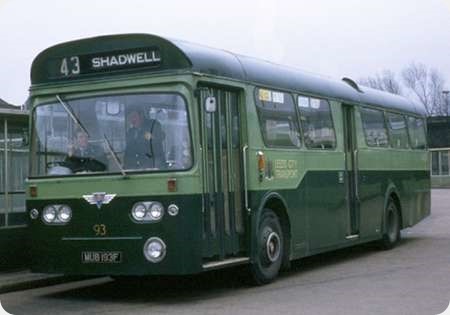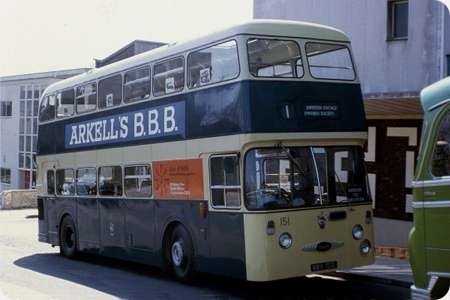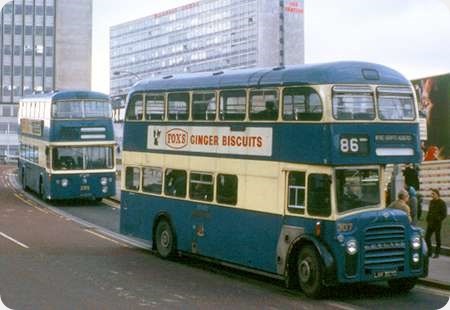
Leeds City Transport
1968
AEC Swift MP2R
MCW B48D
Pictured in Leeds in April 1970 is Leeds City Transport No.93, MUB 193F, an AEC Swift MP2R bought in May 1968 with MCW B48D bodywork that emulated the forward sloping side pillars of contemporary Alexander designs. A curious feature was the narrow width of the centre exit door. I believe that here was a total of thirty such buses, which were intermixed with deliveries of Swifts with Roe bodywork, also of B48D pattern, some of which arrived in 1967. Swifts continued to feature in the Leeds purchasing programme until 1971. The Swift MP2R was powered by the AH505 8.2 litre engine, and the first Leeds batches, of which No.93 is an example, had the semi automatic Monocontrol transmission. Later examples were fitted with fully auto gearboxes. I am sure that other correspondents with much a greater knowledge than mine of the Leeds system can give details of these buses in service.
Photograph and Copy contributed by Roger Cox
26/06/19 – 09:48
The narrow exit door was also a feature of the Roe bodied Swifts delivered in 1967/68.
The biggest batch of Swifts were the 50 delivered in 1969 were bodied by Park Royal and had full size centre doors The last Swifts came in 1971 and had Roe bodywork. In addition to the Swifts Leeds also bought thirty single deck Fleetlines with Park Royal bodywork these were identical to the fifty Park Royal bodied Swifts
Chris Hough
28/10/20 – 05:36
I think there were 5 variants of these.
51 – ? were AEC Swifts with MCW bodywork, vertical window pillars, lights in the roof line and narrow doors, bus seats MUG 4xxF reg.
? – 100 were AEC Swifts with Roe bodywork, they were the slanting window ones as the pic above, coach seats, narrow rear door MUG 1xxF reg.
Not sure of the split I think 51 – 85 were MCW, 86 – 100 were Roe 1966-8.
1001 – 1050 AEC Swift, Park Royal bodies, wide rear doors, dest display at side. bus seats SUB 4xxG 1969.
1201 – 1230 Daimler Fleetline Roe bodies, wide rear doors, bus seats, dest and route no at side, reg UNW 2xxH introduced 1970.
1051 – 1070 AEC Swift Roe body wide rear doors, only route number at side. coach seats AUB 1xxJ introduces 1971.
Please let me know if I have any of this wrong.
Ken
01/11/20 – 06:07
According to buslistsontheweb.co.uk the 51-100 split was rather more complicated than that:
51 (GUM 451D): Roe body, 1966 (exhibited at Earl’s Court).
52-60 (JNW 9xxE): Roe body, 1967.
61-75 (MNW 1xxF): MCW body, 1968.
76-85 (MUG 4xxF): Roe body, 1968.
86-99 (MUB 1xxF): MCW body, 1968.
100 (MUG 100F): same as 86-99.
Peter Williamson



